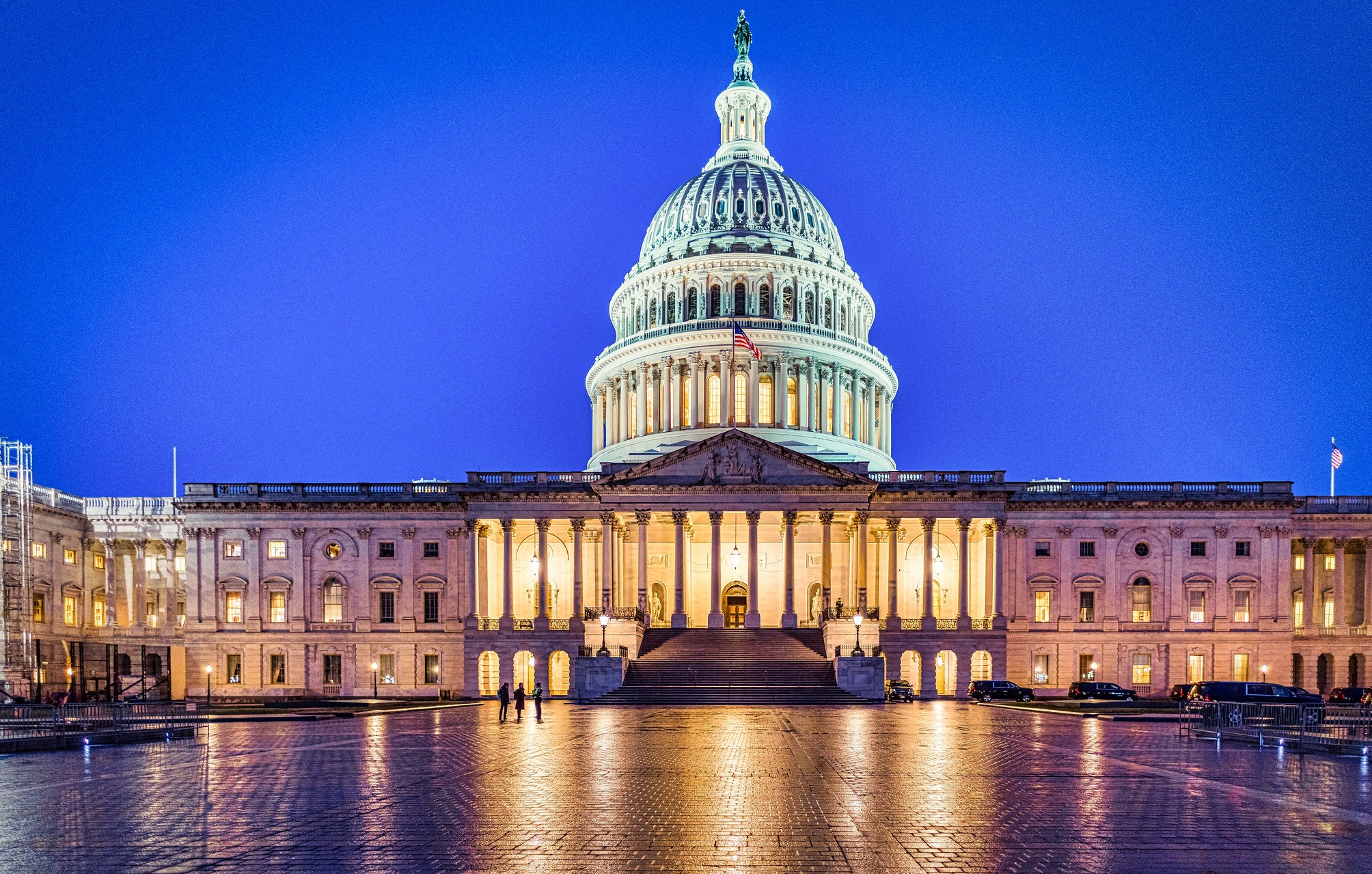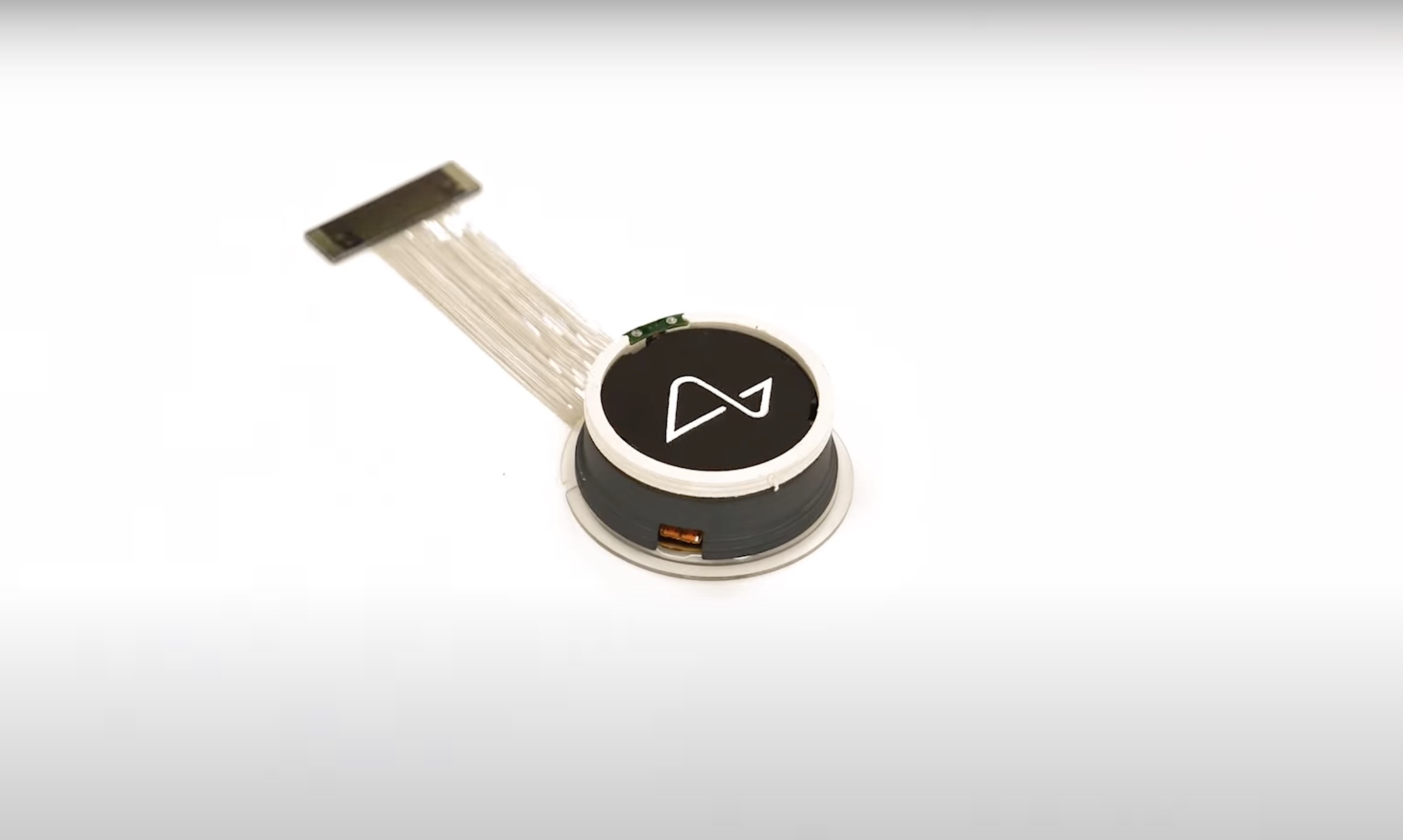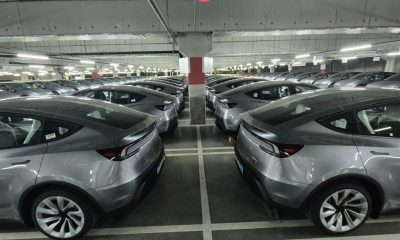News
Tesla’s Giga Berlin director responds to anti-Musk criticism
Tesla’s Gigafactory Berlin Director weighs in on Elon Musk, sales in Germany, and more: “We focus on what we do best”

Following Tesla’s third anniversary of the opening of its plant in Grünheide, Germany, Tesla’s head of manufacturing for the facility has responded to questions about Elon Musk’s recent political alignment with U.S. President Donald Trump, a potential trade war, struggling sales in Germany, and several other topics.
Andre Thierig, Senior Director of Tesla’s Gigafactory Berlin, spoke in an interview with German news outlet the Frankfurter Allgemeine this week, noting that the electric vehicle (EV) maker isn’t concerned about the recent political climate surrounding Musk and Trump. Rather, Thierig echoes a goal regularly stated by some of Tesla’s top executives and designers—that the company is simply hyper-focused on making great vehicles.
“We as a company and even more so as a factory location have never positioned ourselves politically,” Thierig said, as translated from German, when asked if the politicization of Musk was harming the brand or factory. “We focus on what we do best, namely to build cars, and very good and very many. For us, this is about production at the site and not in politics. We can separate that well.”
The interviewer also asked about the arson attacks from environmental activists last March, whether or not Tesla is expecting more situations like that, and if the company has taken any measures to increase security given the recent uptick in vandalism and protests worldwide.
Thierig notes that Giga Berlin has “further improved [its] network for sharing relevant information in order to be able to able to respond more quickly” to such attacks. He also says that employees on-site would take action if necessary.
Glad to see Giga Berlin churning out the new Model Y.🇩🇪
The ramp is underway!
Credit: @tobilindh
— TESLARATI (@Teslarati) March 7, 2025
READ MORE ON TESLA GERMANY: Tesla Giga Berlin ramping to optimum production capacity: plant manager
Regarding Tesla’s decline in February sales in Germany, Thierig points to the shift to producing the new refreshed Model Y from the legacy version, which required the factory to shut down production for a few days. He also notes that he can’t directly comment on how many pre-orders Tesla received for the new Model Y, pointing out that his team and the factory were focused on production, instead leaving sales up to the sales division.
“We in the Gigafactory do not sell, we produce,” Thierig explains. “The sales figures are the responsibility of our sales organization. However, we know our production figures and our production planning, and we are currently moving production further high. Our delivery locations here and on the airport site in Neuhardenberg are relatively empty, so the cars are quickly entering the market.”
When asked if he was concerned about incoming tariffs from the Trump administration, Thierig says that the factory increased localization of suppliers with the recent switch to the new Model Y, adding that 92 percent of components for the EV now come from somewhere in Europe.
“This makes us even more resilient to disturbances in world trade,” he adds. “In addition, we have a high level of vertical integration at the site, which has already paid off in recent years. Neither the turbulence in the supply chains during the corona pandemic nor the chip crisis or the war in Ukraine have led to production disruptions in our country.”
The interview also touches on Giga Berlin’s long-awaited expansion plans, recent criticism from union IG Metall, what he expects from the incoming federal government, and how he believes that bureaucracy needs to be reduced in the country, among many other topics still.
Thierig has been with Tesla at Giga Berlin since August 2020, first working as a paint manager, before being promoted to Manufacturing Director and subsequently to Senior Director for the factory in general. Prior to that, Thierig was a 19-year veteran with Ford’s German operations, primarily working in paint engineering.
Tesla shares reservations about Giga Berlin’s revised water contract
News
Volkswagen teams with Uber for robotaxi service with the ID. Buzz
Volkswagen and Uber team up to launch a driverless ID. Buzz robotaxi fleet in U.S. cities. Testing starts in LA this year.

Volkswagen of America and Uber unveiled a plan to launch a commercial robotaxi service using autonomous electric ID. Buzz vehicles across U.S. cities over the next decade. The partnership marks a significant step for Volkswagen’s autonomous vehicle ambitions, leveraging Uber’s ride-hailing expertise.
The service will debut in Los Angeles by late 2026, with human safety operators initially overseeing the fleet before transitioning to fully driverless operations in 2027. Volkswagen ADMT, the German automaker’s autonomous subsidiary, will begin testing in Los Angeles later this year upon securing a testing permit from the California Department of Motor Vehicles. The California Public Utilities Commission will oversee permits for the commercial ride-hailing phase.
“Volkswagen is not just a car manufacturer — we are shaping the future of mobility, and our collaboration with Uber accelerates that vision,” said Christian Senger, CEO of Volkswagen Autonomous Mobility. “What really sets us apart is our ability to combine the best of both worlds–high-volume manufacturing expertise with cutting-edge technology and a deep understanding of urban mobility needs.”
The Trump administration’s recent policy shift, announced last Thursday by Transportation Secretary Sean Duffy, supports initiatives like VW and Uber’s partnerships by easing federal safety rules and crash reporting requirements on autonomous vehicle development. According to Duffy, the United States government wants to outpace Chinese competitors in autonomous vehicle development.
Volkswagen ADMT, which launched publicly in July 2023, has been testing 10 ID. Buzz vehicles equipped with Mobileye’s autonomous technology in Austin, reported TechCrunch. Two years ago, Volkswagen focused on selling self-driving vans and fleet management software rather than building its own ride-hailing service. VW’s strategy toward autonomous vehicles appears to have shifted, as reflected in its Uber partnership.
Uber will strengthen its autonomous vehicle portfolio through its partnership with Volkswagen. The ride-hailing service company has secured deals with over 14 firms, including Waymo in Austin and a forthcoming launch in Atlanta.
The Volkswagen-Uber collaboration positions both companies to capitalize on the growing robotaxi market. With testing imminent and regulatory support increasing, the ID. Buzz fleet could redefine urban mobility, blending Volkswagen’s manufacturing prowess with Uber’s ride-hailing network to compete in the evolving autonomous vehicle landscape.
News
These automakers are pushing to overturn California’s gas car ban
This lobbying group represents Detroit’s Big Three automakers, as well as several others selling vehicles in the U.S.

A lobbying group made up of several automakers is pushing Congress to ban California’s plan to phase out and ban new gas car sales altogether by 2035, ahead of a vote that could also affect the 11 other states that have followed with similar plans.
The Alliance for Automotive Innovation (AAI), an organization representing the interests of Ford, General Motors (GM), Stellantis, Toyota, Volkswagen, Hyundai, and several others, recently sent a letter to Congress requesting that it overturn a waiver granted to California letting it set its own emissions rules.
Later this week, the U.S. House of Representatives will vote on overturning the waiver granted to California under the 1968 Clean Air Act to impose the tightened standards, according to Reuters. In the previous letter, the AAI argued to Congress that automakers would be “forced to substantially reduce the number of overall vehicles for sale to inflate their proportion of electric vehicle sales,” adding that it would also boost prices and reduce competition in the market.
The waiver, enacted under the Biden administration’s Environmental Protection Agency (EPA), allows California to mandate at least 80 percent electric vehicle sales by 2035 under the Clean Air Act. The passage of disapproval of the waiver is being ushered under the Congressional Review Act, and an initial vote in the House of Representatives is set to take place on Wednesday.
READ MORE ON STATE EMISSIONS RULES: Tesla could face emissions credit tax in Washington
The U.S. Court of Appeals for the District of Columbia backed the EPA’s decision to grant the waiver last April, following a challenge from 17 Republican-run states. The group claimed that California was being given unconstitutional regulatory power in the decision, adding that other states didn’t have those same powers.
In December, the U.S. Supreme Court agreed to hear out bids from Valero, the AAI, and other groups to oppose the 2035 California gas car sales ban, which would begin phasing them out in 2026 if the waiver remains in place.
You can see the full list of members of the AAI below, including automakers and a handful of other tech companies.
Companies represented by the Alliance for Automotive Innovation (AAI)
Here’s the full list of AAI members, according to the lobbying group’s website:
- AESC
- AISIN
- Aptiv
- Autoliv
- BMW Group
- Bosch
- Denso
- Emergency Safety Solutions
- Ferrari
- Ford
- GM
- Harman
- Honda
- Hyundai
- InEos Automotive
- Infineon
- Isuzu
- Jaguar-Land Rover
- Kia
- LG
- Luminar
- Magna
- Mazda
- McLaren
- Mercedes-Benz
- Mitsubishi Motors
- Nissan
- Nuro
- Panasonic
- Porsche
- Qualcomm
- RV Industry Association
- Samsung
- SiriusXM
- SK On
- Stellantis
- Subaru
- Texas Instruments
- Toyota
- Uber
- VinFast
- Volkswagen
- Volvo
- Zoox
California proposal to allow self-driving tests for heavy-duty trucks
News
Neuralink’s third brain chip patient shares first video edited with BCI
The third Neuralink brain chip patient is the trial’s first patient with ALS and its first non-verbal patient, and he has detailed his experience regaining speech and more.

Elon Musk’s Neuralink has officially installed its brain-chip interface (BCI) into a third human patient, and the individual shared a video this week detailing his experiences gaining control of external devices and regaining the ability to talk through the use of AI.
On Monday, X user Bradford G Smith shared a video detailing his experience as the third person in the world to receive the Neuralink BCI, and as the first non-verbal patient and the first with Amyotrophic Lateral Sclerosis (ALS) to receive the implant. In the video, Smith details how the BCI works, how it’s less limiting than his previous eye tracker technology, and how it has literally helped him regain his voice through AI.
“I am typing this with my brain,” Smith wrote. “It is my primary communication.”
The video, which he says is the first edited directly with a BCI, is narrated by an AI-generated version of his old voice. Prior to the BCI, he was also unable to leave the house using his eye tracker, as it made it difficult to communicate unless he was in dark or low-light settings.
The video also shows how he’s able to connect with external devices using the BCI, with a live shots of him controlling his computer using a cursor.
You can see the full update below, which runs a little under 10 minutes.
READ MORE ON NEURALINK: Elon Musk: over 1,000 humans with Neuralink implants in 2026 is feasible
The news follows Neuralink’s initial update with Brad and other initial BCI patients, as was shared in a post on the company’s website in February. In it, Brad also explained how groundbreaking it was to be able to communicate outside and see his son win a robotics award, along with being able to consider leaving the city area for the first time in half a decade:
The most significant thing that happened this week will sound strange to you: I got to use the computer on the porch, and it worked!!
I went to [my child’s] soccer game, and the referee thought I was sleeping. I was actually able to talk outside. I [am] actually thinking about traveling outside the [city] metro [for] the first time in 5 years.
Both of Neuralink’s studies focus on restoring autonomy to people who are paraplegic through the use of external devices. The company gained initial approval from the U.S. Food and Drug Administration (FDA) to install the first BCI in a human patient in May 2023, with Noland Arbaugh being the first, a patient named Alex being the second, and Brad being the third.
Neuralink opened its Patient Registry worldwide earlier this month, allowing participants to submit to take part in the company’s initial PRIME and CONVOY studies. The firm also announced plans to operate the PRIME study out of a second location in Miami, Florida in January, after an initial location was launched in Phoenix, Arizona.
Last week, it was reported by Bloomberg that Neuralink is currently targeting a $500 million funding round at a valuation of $8.5 billion. Meanwhile, Neuralink has also been constructing office buildings near Austin, Texas, which initially aimed to be completed in May 2025.
-

 News1 week ago
News1 week agoTesla’s Hollywood Diner is finally getting close to opening
-

 Elon Musk2 weeks ago
Elon Musk2 weeks agoTesla doubles down on Robotaxi launch date, putting a big bet on its timeline
-

 News4 days ago
News4 days agoTesla is trying to make a statement with its Q2 delivery numbers
-

 News2 weeks ago
News2 weeks agoTesla’s top investor questions ahead of the Q1 2025 earnings call
-

 News2 weeks ago
News2 weeks agoUnderrated Tesla safety feature recognized by China Automotive Research Institute
-

 News2 weeks ago
News2 weeks agoTesla reveals its Q1 Supercharger voting winners, opens next round
-

 Investor's Corner7 days ago
Investor's Corner7 days agoLIVE BLOG: Tesla (TSLA) Q1 2025 Company Update and earnings call
-

 News2 weeks ago
News2 weeks agoTesla police fleet saves nearly half a million in upkeep and repair costs





















